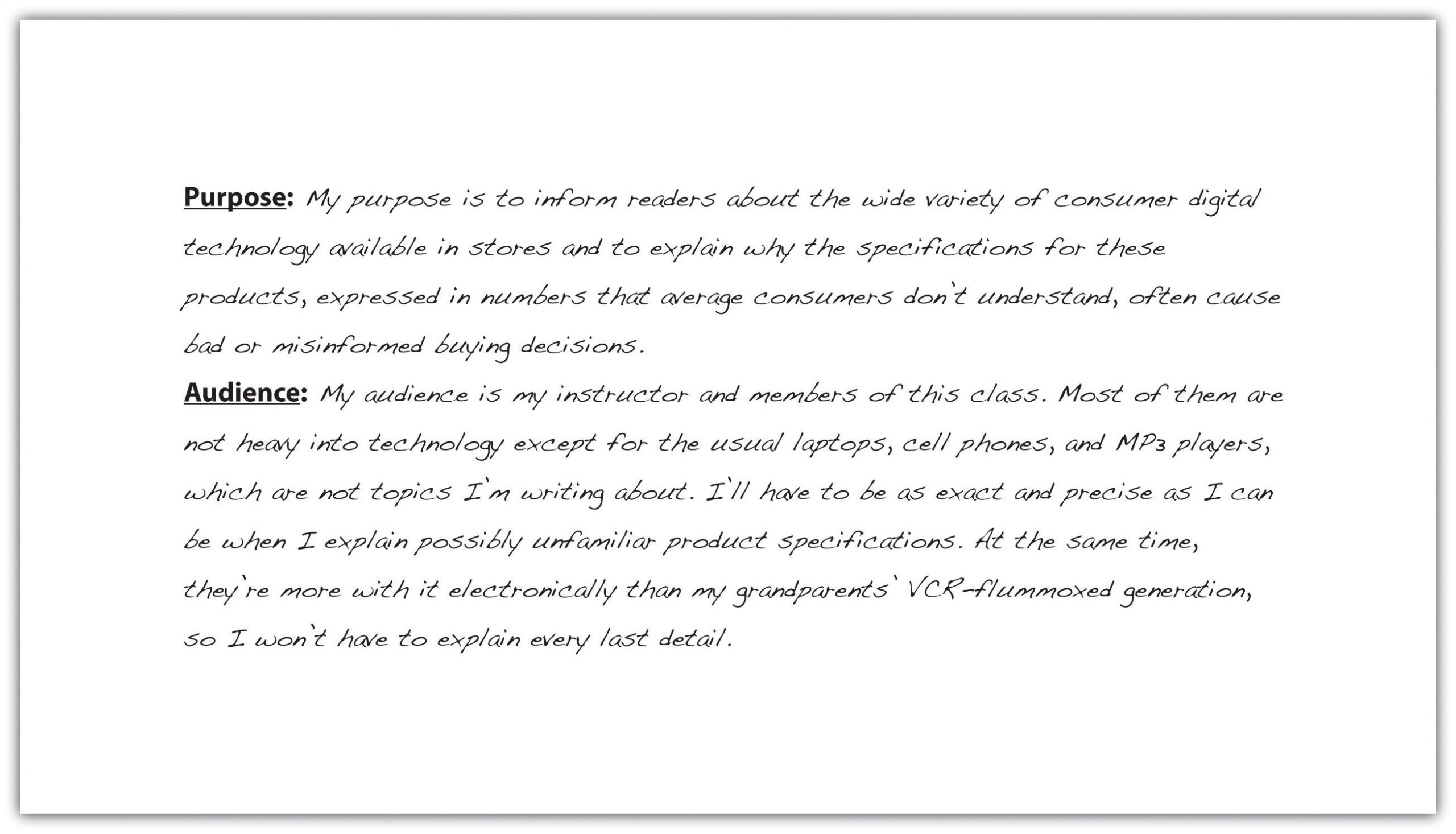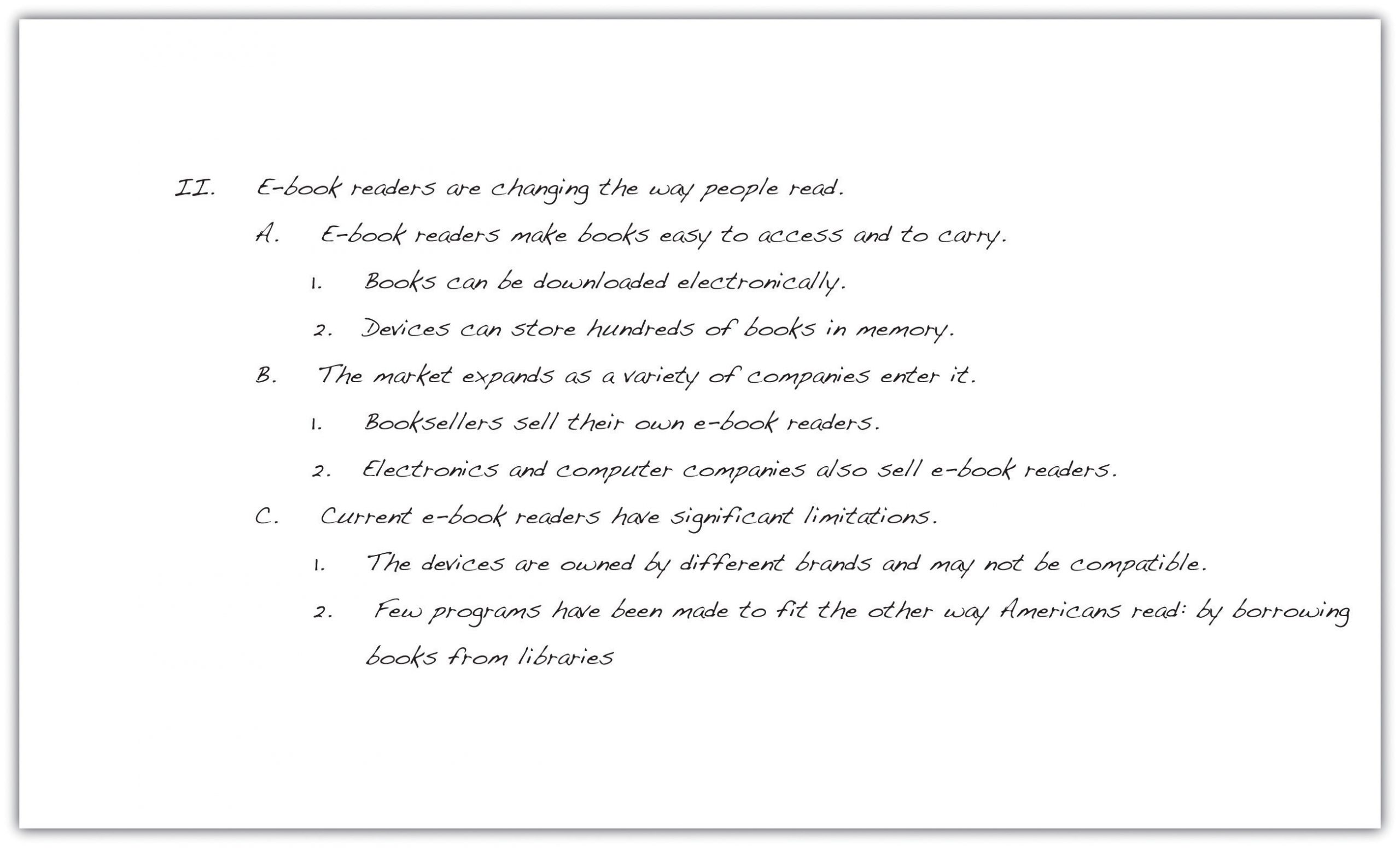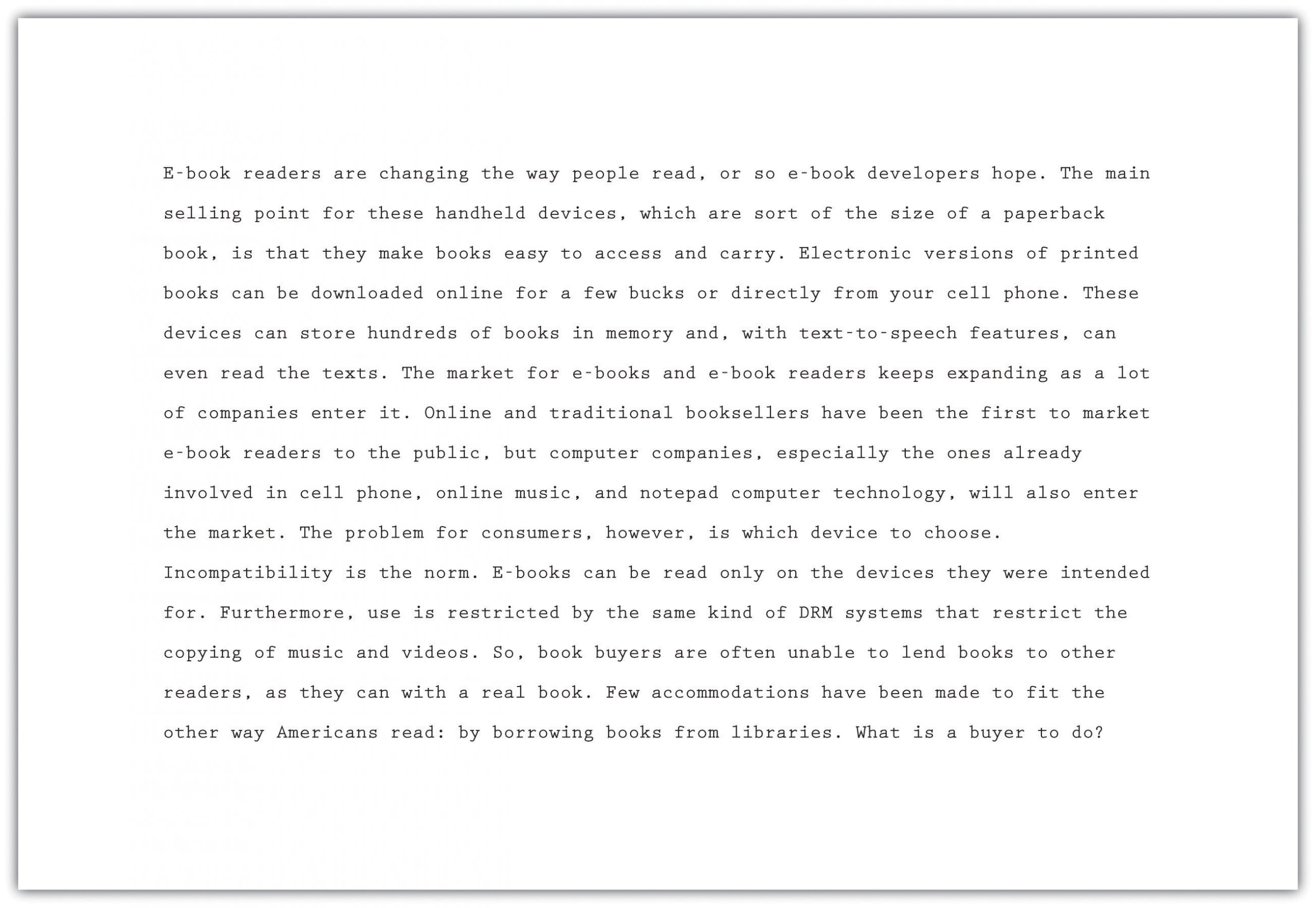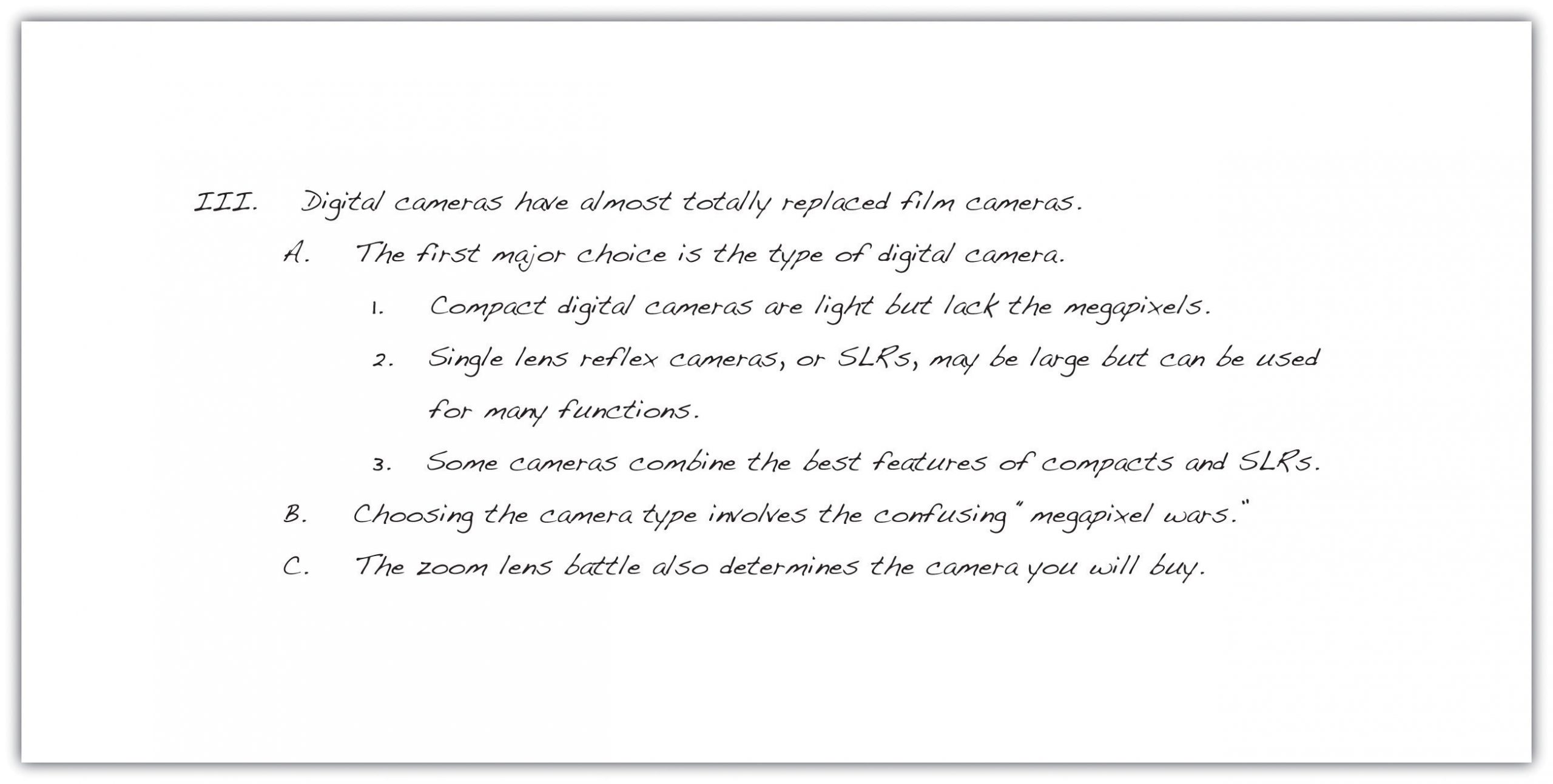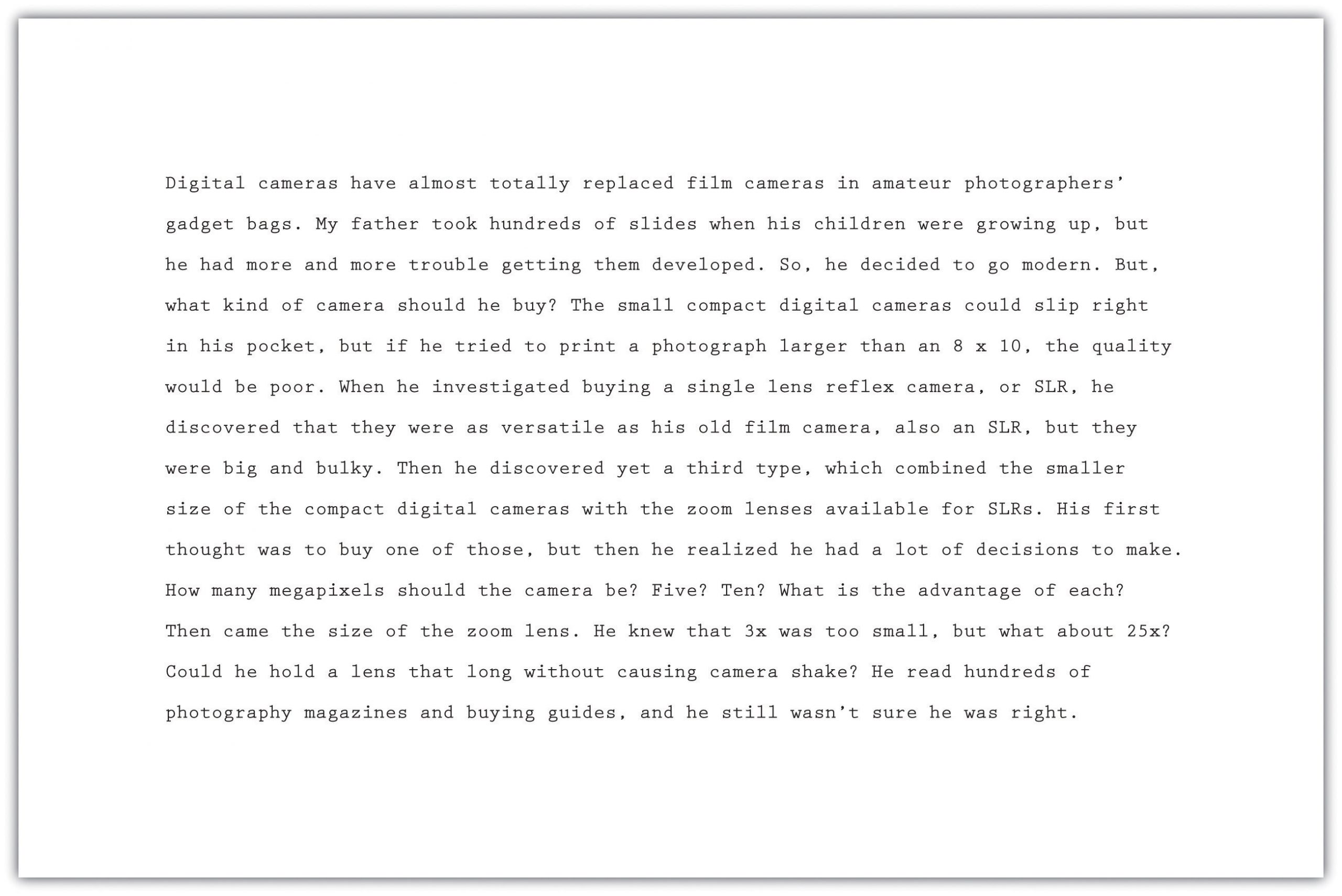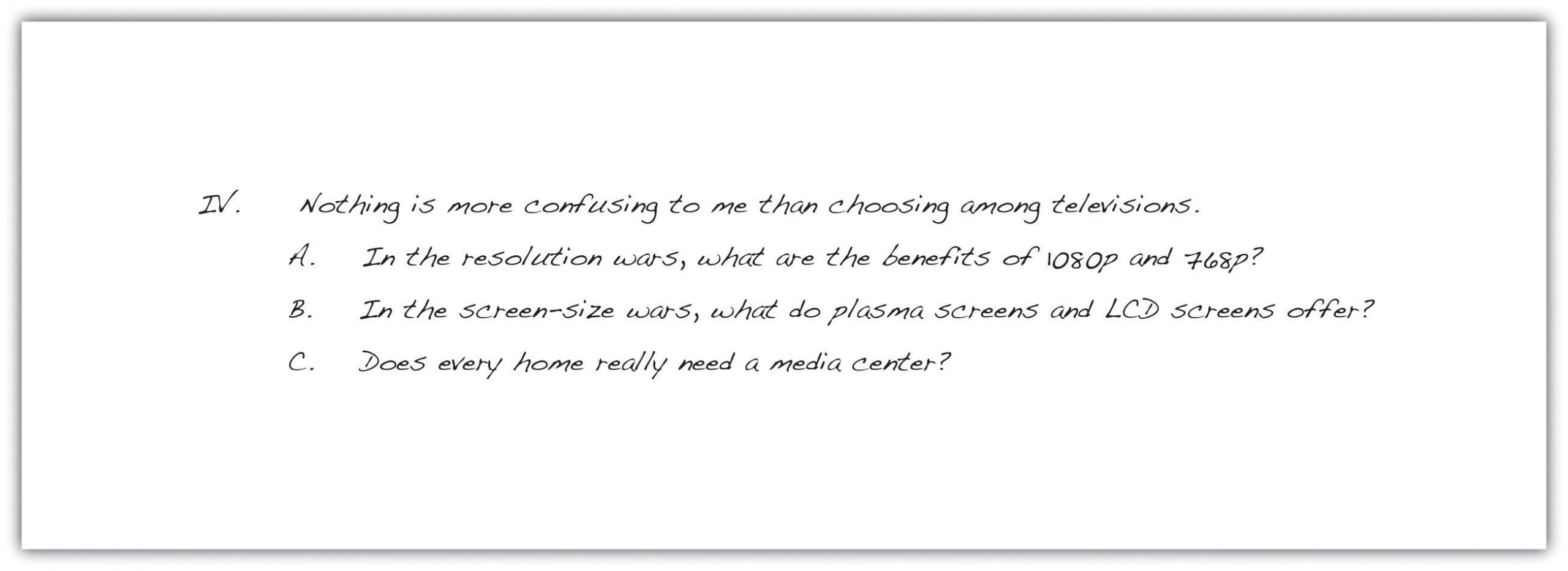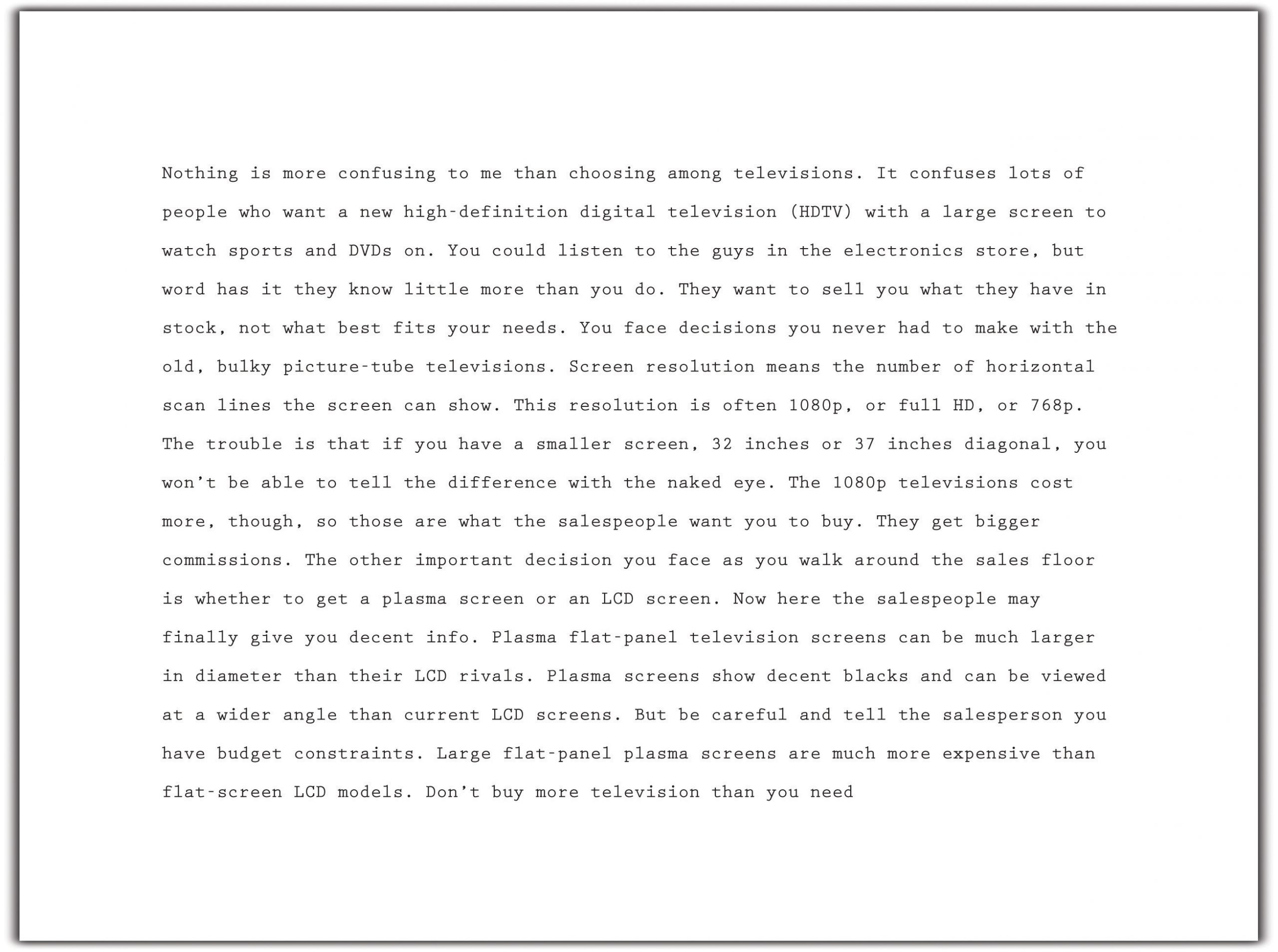Drafting
Drafting is the stage of the writing process in which you put all of your prewriting and organizing ideas into sentences and paragraphs. The aim in drafting at first should be to write the bulk of the essay in a rough form, without worrying much about revisions and edits (which are later steps in the writing process).
The point of prewriting and organizing was to make this stage of drafting more manageable. If you take prewriting and organizing seriously, you already have notes and plan about what you need to draft. If you failed to prewrite and organize, you might be facing the terror of the blank page, which can tempt writers into trying to construct a final draft from nothing–a very bad idea. So take prewriting and organizing seriously to help make this stage of the writing process as effective as possible.
Making the Writing Process Work for You
What makes the writing process so beneficial to writers is that it encourages alternatives to standard practices while motivating you to develop your best ideas. For instance, the following approaches, done alone or in combination with others, may improve your writing and help you move forward in the writing process:
- Start with the body paragraphs. A common error is to start drafting an essay at the introduction since that’s the first paragraph in a final draft, but you cannot effectively introduce something you do not yet know. You can’t introduce someone at a social gathering if you have no idea who that person is, and you can’t effectively introduce body paragraphs that you haven’t drafted yet. So draft several body paragraphs before going back and creating an introduction that discusses them.
- Begin writing with the part you know the most about. You can start with the third paragraph in your outline if ideas come easily to mind. You can start with the second paragraph or the first paragraph, too. Although paragraphs may vary in length, keep in mind that short paragraphs may contain insufficient support. Readers may also think the writing is abrupt. Long paragraphs may be wordy and may lose your reader’s interest. As a guideline, try to write paragraphs longer than one sentence but shorter than the length of an entire double-spaced page.
- Write one paragraph at a time and then stop. As long as you complete the assignment on time, you may choose how many paragraphs you complete in one sitting. Pace yourself. On the other hand, try not to procrastinate. Writers should always meet their deadlines.
- Take short breaks to refresh your mind. This tip might be most useful if you are writing a multi-page report or essay. Still, if you are antsy or cannot concentrate, take a break to let your mind rest. But do not let breaks extend too long. If you spend too much time away from your essay, you may have trouble starting again. You may forget key points or lose momentum. Try setting an alarm to limit your break, and when the time is up, return to your desk to write.
- Be reasonable with your goals. If you decide to take ten-minute breaks, try to stick to that goal. If you told yourself that you need more facts, then commit to finding them. Holding yourself to your own goals will create successful writing assignments.
- Keep your audience and purpose in mind as you write. These aspects of writing are just as important when you are writing a single paragraph for your essay as when you are considering the direction of the entire essay.
Of all of these considerations, keeping your purpose and your audience at the front of your mind is the most important key to writing success.
Your purpose will guide your mind as you compose your sentences. Your audience will guide word choice. Are you writing for experts, for a general audience, for other college students, or for people who know very little about your topic? Keep asking yourself what your readers, with their background and experience, need to be told in order to understand your ideas. How can you best express your ideas so they are totally clear and your communication is effective?
Exercise 1
Using a subject of your choosing (such as one you have outlined in previous exercises), describe your purpose and your audience as specifically as you can. Keep these responses near you during future stages of the writing process.
My purpose: ____________________________________________
____________________________________________
____________________________________________
My audience: ____________________________________________
____________________________________________
____________________________________________
The Basic Elements of a First Draft
If you have been using the information in this chapter step by step to help you develop an assignment, you already have both a formal topic outline and a formal sentence outline to direct your writing. Knowing what a first draft looks like will help you make the creative leap from the outline to the first draft. A first draft should include the following elements:
- An introduction that clearly identifies the subject, the thesis, and the main ideas to come (in the order that they will appear).
- A thesis statement that presents the main claim of the entire piece of writing.
- A topic sentence in each paragraph that states the main point of the paragraph and implies how that main point connects to the thesis statement.
- Supporting sentences in each paragraph that develop or explain the topic sentence. These can be reasons, specific examples, explanations, comparisons, facts, or other strategies that help support the main points and the thesis.
- A conclusion that emphasizes the most important ideas and interpretations.
See the chapter Paragraphs for information on topic sentences and other key parts of a paragraph. See the chapter Essays for more information on thesis statements and other key parts of an essay.
Examples of Starting a Draft
Now we are finally ready to look over Mariah’s shoulder as she begins to write her essay about digital technology and the confusing choices that consumers face. As she does, you should have in front of you your outline, with its thesis statement and topic sentences, and the notes you wrote earlier in this lesson on your purpose and audience. Reviewing these will put both you and Mariah in the proper mind-set to start.
The following is Mariah’s thesis statement.
Here are the notes that Mariah wrote to herself to characterize her purpose and audience.
Mariah chose to begin by writing a quick introduction based on her thesis statement. She knew that she would want to improve her introduction significantly when she revised. Right now, she just wanted to give herself a starting point.
With her thesis statement and her purpose and audience notes in front of her, Mariah then looked at her sentence outline. She chose to use that outline because it includes the topic sentences. The following is the portion of her outline for the first body paragraph. The Roman numeral II identifies the topic sentence for the paragraph, capital letters indicate supporting details, and Arabic numerals label subpoints.
Mariah then began to expand the ideas in her outline into a paragraph. Notice how the outline helped her guarantee that all her sentences in the body of the paragraph develop the topic sentence.
Tip
When you make major changes to a draft, save the different version as a different document with a different title—such as draft 1, draft 2, and so on—so that you will have a complete history of drafts. This can come in handy when later changing your mind about a direction you went with a draft.
Exercise 2
Study how Mariah made the transition from her sentence outline to her first draft. First, copy her outline onto your own sheet of paper. Leave a few spaces between each part of the outline. Then copy sentences from Mariah’s paragraph to align each sentence with its corresponding entry in her outline.
Examples of Continuing a Draft
Mariah continued writing her essay, moving to the second and third body paragraphs. She had supporting details but no numbered subpoints in her outline, so she had to consult her prewriting notes for specific information to include.
Tip
If you decide to take a break between finishing your first body paragraph and starting the next one, do not start writing immediately when you return to your work. Put yourself back in context and in the mood by rereading what you have already written. This is what Mariah did. If she had stopped writing in the middle of writing the paragraph, she could have jotted down some quick notes to herself about what she would write next.
Preceding each body paragraph that Mariah wrote is the appropriate section of her sentence outline. Notice how she expanded Roman numeral III from her outline into a first draft of the second body paragraph. As you read, ask yourself how closely she stayed on purpose and how well she paid attention to the needs of her audience.
Mariah then began her third and final body paragraph using Roman numeral IV from her outline.
Exercise 3
Re-read body paragraphs two and three of the essay that Mariah is writing.
- In body paragraph two, Mariah decided to develop her paragraph as a nonfiction narrative. Do you agree with her decision? Explain. How else could she have chosen to develop the paragraph? Why is that better?
- Compare the writing styles of paragraphs two and three. What evidence do you have that Mariah was getting tired or running out of steam? What advice would you give her? Why?
- Choose one of these two body paragraphs. Write a version of your own that you think better fits Mariah’s audience and purpose.

